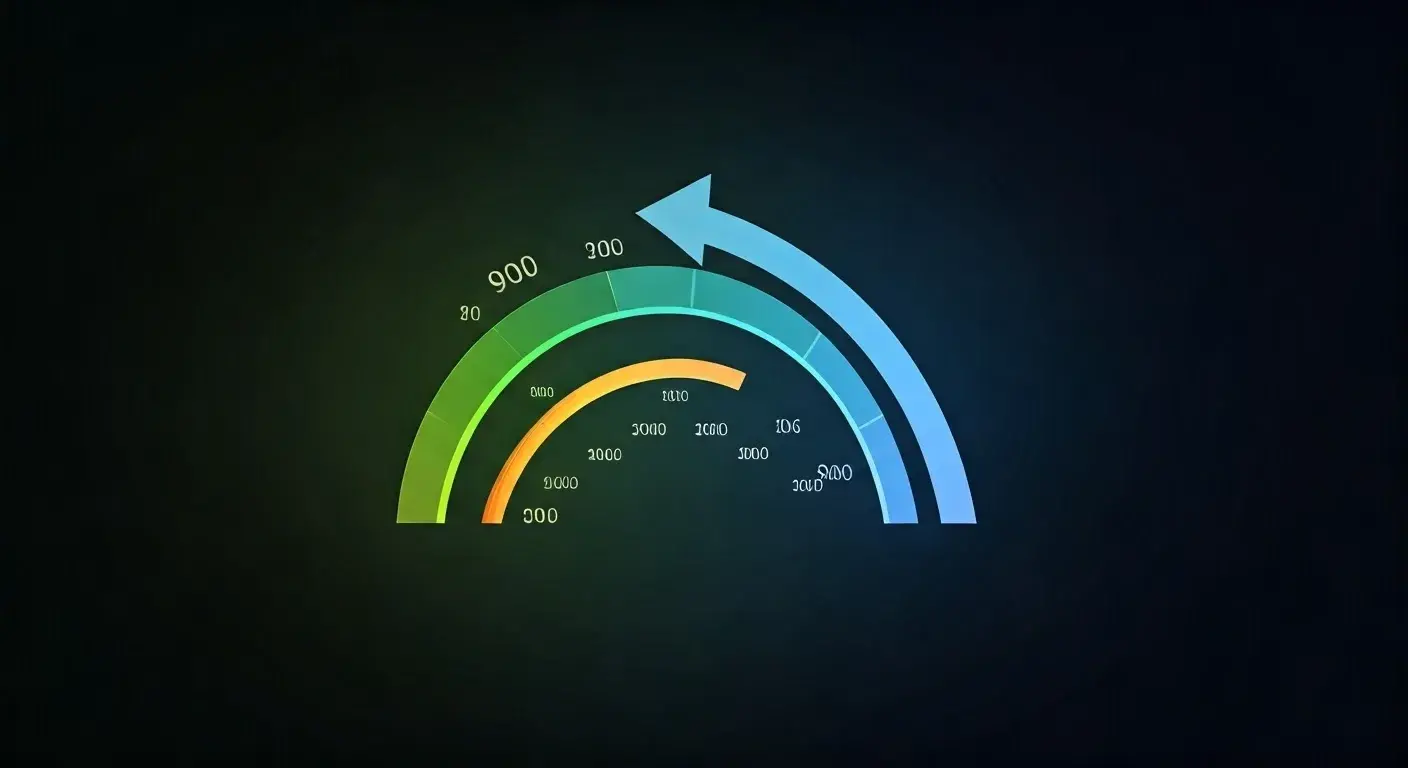-
Posted on: 24 Dec 2022

-
Step 1: Master Your Payment History
Improving your credit score is a journey, and the most crucial element to focus on is your payment history. This single factor holds the most weight in determining your creditworthiness. By consistently making on-time payments, you demonstrate to lenders that you are a reliable borrower. This guide will break down how to improve your credit score in four actionable steps, starting with the foundational pillar: your payment history. In 2025, lenders are more attuned than ever to consistent financial responsibility, making this the absolute first priority.
The Undeniable Impact of On-Time Payments
Your payment history accounts for approximately 35% of your FICO score, the most widely used credit scoring model in the United States. This means that every single payment you make, whether it's for a credit card, mortgage, auto loan, or even some utility bills if reported, has a significant impact. Late payments, defaults, and bankruptcies can drastically lower your score, while on-time payments build a positive track record.
Understanding What Constitutes a "Late" Payment
Most credit card companies and lenders report payments to credit bureaus if they are 30 days or more past the due date. However, even a payment that is 15-29 days late can be marked as late and negatively affect your score. It's vital to understand the grace period offered by your creditors, but relying on it too often is a risky strategy. The safest approach is to always pay before or on the due date.
Strategies for Never Missing a Payment
Missing a payment can feel like a minor inconvenience, but its long-term consequences on your credit score can be substantial. Fortunately, there are several effective strategies to ensure you stay on track:
- Automate Your Payments: This is arguably the most effective method. Set up automatic payments for all your bills, ensuring the funds are withdrawn from your bank account on or before the due date. Most credit card companies and lenders offer this service through their online portals. Ensure you have sufficient funds in your account to cover these automatic withdrawals to avoid overdraft fees, which can also negatively impact your financial health.
- Set Calendar Reminders: If automation isn't feasible or you prefer a more hands-on approach, set up calendar reminders on your phone or computer a few days before each bill is due. This provides a buffer to make the payment manually.
- Use a Budgeting App: Many modern budgeting applications can track your bills and send you alerts when payments are due. These apps can also help you manage your overall cash flow, ensuring you have the money available to make your payments on time.
- Consolidate Due Dates: If you have multiple bills with different due dates scattered throughout the month, consider contacting your creditors to see if you can adjust them to a more manageable schedule, perhaps all due around your payday. This simplifies your bill-paying process.
Dealing with Past Late Payments
If you have past late payments on your credit report, don't despair. While they will remain on your report for seven years, their impact diminishes over time, especially if you establish a new pattern of responsible behavior. Here's what you can do:
- Focus on the Future: The most important thing is to make all future payments on time. This demonstrates to lenders that you have learned from past mistakes and are now a more reliable borrower.
- Dispute Inaccurate Information: If a late payment was reported in error, you have the right to dispute it with the credit bureaus. Gather any evidence you have (e.g., payment confirmations) and file a dispute. This process can take time, but it's worth it if the information is incorrect. You can learn more about disputing errors at the Consumer Financial Protection Bureau (CFPB).
- Goodwill Letters: In some cases, you can write a "goodwill letter" to the creditor explaining the circumstances of your late payment (e.g., a temporary financial hardship) and politely request that they remove the late payment mark from your credit report. This is not guaranteed, but it can be effective if you have a good history with the creditor otherwise.
The Importance of Paying More Than the Minimum
While paying on time is paramount, paying more than the minimum amount due on your credit cards can also indirectly benefit your credit score. This is primarily because it helps reduce your credit utilization ratio, which we will discuss in the next step. By paying down your balances faster, you not only save on interest charges but also improve a key metric that lenders scrutinize.
Understanding Interest and Minimum Payments
Credit card minimum payments are often calculated as a small percentage of your balance, plus any accrued interest and fees. Paying only the minimum means it can take years, even decades, to pay off your debt, and you'll end up paying a substantial amount in interest. For example, carrying a $5,000 balance at 18% APR with a minimum payment of 2% could take over 30 years to pay off and cost you more than $10,000 in interest alone.
How Paying Extra Helps Your Score
By consistently paying more than the minimum, you reduce your outstanding balance more quickly. A lower balance directly contributes to a lower credit utilization ratio, a factor that significantly impacts your credit score. This proactive approach to debt management not only frees you from interest but also positively influences your credit profile.
In summary, mastering your payment history is the bedrock of improving your credit score. By implementing automated payments, setting reminders, and making an effort to pay more than the minimum, you lay a strong foundation for a healthy credit future. In 2025, this consistent discipline is the most potent tool in your arsenal for credit score enhancement.
Step 2: Optimize Your Credit Utilization Ratio
Once you've established a solid foundation with on-time payments, the next critical step in improving your credit score is to optimize your credit utilization ratio (CUR). This metric, which accounts for about 30% of your FICO score, reflects how much of your available credit you are currently using. Lenders view a high utilization ratio as a sign of potential financial distress, suggesting you may be overextended and at a higher risk of default. In 2025, maintaining a low CUR remains a top priority for lenders assessing creditworthiness.
What is Credit Utilization Ratio?
Your credit utilization ratio is calculated by dividing your total outstanding credit card balances by your total available credit limit. For example, if you have two credit cards: Card A with a balance of $1,000 and a limit of $5,000, and Card B with a balance of $500 and a limit of $2,000, your total balance is $1,500, and your total credit limit is $7,000. Your CUR would be $1,500 / $7,000 = 21.4%.
It's important to note that while this calculation is straightforward, the impact on your score is significant. Credit bureaus look at your CUR on an individual card basis and your overall CUR. Ideally, you want to keep your overall CUR below 30%, but even lower is better. Many experts recommend aiming for below 10% for optimal results.
The Ideal Credit Utilization Ratio
While there's no magic number that guarantees a perfect score, research and scoring models consistently show that lower utilization ratios lead to higher credit scores. Here's a general guideline:
- Below 30%: Generally considered good.
- Below 10%: Excellent and highly recommended for maximizing your score.
- Above 50%: Can significantly harm your score.
- 100% or more: Very damaging to your credit score.
In 2025, with increasing economic uncertainties, lenders are particularly cautious. A high CUR can signal that you're relying heavily on credit to manage expenses, which is a red flag. Maintaining a low CUR demonstrates financial discipline and responsible credit management.
Strategies to Lower Your Credit Utilization Ratio
Reducing your CUR is achievable with a strategic approach. Here are several effective methods:
1. Pay Down Your Balances Aggressively
The most direct way to lower your CUR is to reduce the amount of debt you owe. Focus on paying down your credit card balances, especially those with the highest utilization. Prioritize paying more than the minimum payment whenever possible. Even small, consistent payments above the minimum can make a significant difference over time.
2. Increase Your Credit Limits
Another effective strategy is to increase your available credit. If your income has increased or your credit history has improved, you can request a credit limit increase from your current credit card issuers. A higher credit limit, assuming your spending remains the same, will automatically lower your utilization ratio.
How to Request a Credit Limit Increase:
- Online: Most credit card companies allow you to request a limit increase through their online portal.
- Phone: Call the customer service number on the back of your credit card.
- Be Prepared: Have information about your income and employment ready, as they may ask for it.
- Timing: It's often best to wait at least six months after opening a new account or after your last limit increase before requesting another.
Caution: Be mindful that some credit limit increase requests may result in a "hard inquiry" on your credit report, which can temporarily lower your score by a few points. However, the benefit of a lower CUR usually outweighs this minor dip.
3. Avoid Maxing Out Credit Cards
It might seem obvious, but consistently maxing out credit cards is detrimental to your CUR. Even if you pay off the balance in full each month, the high utilization might be reported to the credit bureaus before you pay it down, negatively impacting your score. Aim to keep individual card balances well below their limits.
4. Strategically Use Multiple Credit Cards
If you have multiple credit cards, manage your spending across them. Instead of putting all your purchases on one card and maxing it out, distribute your spending to keep the utilization low on each card. For instance, if you have two cards with $5,000 limits each, try to keep the balance on each below $1,500 (30% utilization).
5. Make Multiple Payments Throughout the Month
Credit card companies typically report your balance to the credit bureaus once a month, usually on your statement closing date. If you make a large payment just before your statement closes, your reported balance will be lower, thus lowering your reported CUR for that billing cycle. You can make several smaller payments throughout the month to keep your balance low.
6. Consider a Balance Transfer (with Caution)
If you have high balances on multiple cards, a balance transfer to a new card with a 0% introductory APR can be beneficial. This allows you to pay down debt without accumulating interest. However, be aware of balance transfer fees and the APR after the introductory period ends. The primary goal here is to reduce your overall debt, which in turn lowers your CUR. Ensure you have a plan to pay off the balance before the 0% APR expires.
Credit Utilization vs. Debt-to-Income Ratio
It's important to distinguish between credit utilization ratio and debt-to-income ratio (DTI). While both are important financial metrics, they measure different things:
Metric What it Measures Impacts Calculation Credit Utilization Ratio (CUR) Amount of revolving credit used compared to total available revolving credit. Credit Score (approx. 30% of FICO score) (Total Balances / Total Credit Limits) x 100 Debt-to-Income Ratio (DTI) Monthly debt payments compared to gross monthly income. Loan Approval (mortgages, auto loans, etc.) (Total Monthly Debt Payments / Gross Monthly Income) x 100 While DTI is crucial for loan applications, CUR is a primary driver of your credit score. Focusing on lowering your CUR directly impacts your credit score, making it a key step in improving it.
By actively managing and reducing your credit utilization ratio, you send a strong signal to lenders that you are a responsible borrower. In 2025, with a focus on financial stability, a low CUR is more important than ever for achieving a healthy credit score and securing favorable lending terms. This step, combined with consistent on-time payments, forms the core of a robust credit improvement strategy.
Step 3: Understand Credit Age and Mix
The third crucial step in improving your credit score involves understanding two less controllable, yet significant, factors: the age of your credit accounts and the mix of credit you have. While payment history and credit utilization are areas where you can actively make changes, credit age and mix are more about the long-term evolution of your credit profile. Together, they account for about 25% of your FICO score (15% for credit history length and 10% for credit mix).
The Significance of Credit History Length
Lenders want to see a history of responsible credit management over time. A longer credit history generally indicates a more established pattern of behavior, which can be a positive indicator. The "average age of your accounts" is a key metric here. This is calculated by averaging the age of all your open credit accounts, including credit cards, loans, and mortgages.
Factors Influencing Credit Age
- Opening Date of Accounts: The date you opened each credit account is the starting point for its age.
- Closing Date of Accounts: Closed accounts generally remain on your credit report for up to 10 years, and their age continues to be calculated. However, a closed account that is no longer being used or paid off can eventually have less positive impact.
- Average Age: This is the sum of the ages of all your open accounts divided by the number of open accounts.
How to Improve Your Credit Age
Unlike payment history or utilization, you can't directly "improve" the age of your existing accounts. However, you can influence the average age over time:
- Keep Old Accounts Open: Even if you don't use an old credit card frequently, keeping it open (especially if it has no annual fee) can help maintain your average account age. If you use it occasionally for a small purchase and pay it off immediately, it demonstrates continued activity without increasing your utilization.
- Avoid Closing Old Accounts Unnecessarily: Closing an old account can reduce your total available credit (negatively impacting your CUR) and also lower your average account age, both of which can hurt your score.
- Patience is Key: The most significant factor in improving your credit age is simply time. As your older accounts age, your average account age will naturally increase.
The Impact of Closing Accounts
Closing an old credit card account can have a dual negative effect:
- Reduces Available Credit: This can increase your credit utilization ratio if you carry balances on other cards.
- Lowers Average Account Age: This directly impacts the credit history length component of your score.
For example, if you have three credit cards aged 10 years, 5 years, and 2 years, your average age is (10+5+2)/3 = 5.67 years. If you close the 10-year-old card, your average age drops to (5+2)/2 = 3.5 years, a significant decrease.
The Role of Credit Mix
Credit mix refers to the variety of credit accounts you have. Lenders like to see that you can manage different types of credit responsibly. The common types of credit include:
- Revolving Credit: Credit cards, home equity lines of credit (HELOCs). These have a credit limit, and you can borrow and repay funds repeatedly.
- Installment Credit: Mortgages, auto loans, student loans, personal loans. These have a fixed payment schedule over a set period.
Having a mix of both revolving and installment credit can be beneficial, suggesting you can handle different repayment structures. However, this factor is less impactful than payment history and utilization. You don't need to open new accounts solely to achieve a specific mix if it doesn't align with your financial needs.
Is a Diverse Credit Mix Necessary?
While a diverse credit mix can contribute positively to your score, it's not a primary focus for most consumers. If you primarily use credit cards and have a mortgage, that's often sufficient. Forcing yourself to take out loans you don't need just for the sake of credit mix can lead to unnecessary debt and interest charges.
Example: A person with only credit cards might have a good score. However, if they also have an auto loan or a mortgage, it can further strengthen their credit profile by demonstrating they can manage installment debt. Conversely, someone with only installment loans and no revolving credit might miss out on the positive impact of managing credit cards.
Credit Mix and New Accounts
Opening a new credit card or taking out a new loan will affect your credit mix. If you already have several credit cards and no installment loans, adding an installment loan could improve your mix. Conversely, if you have many installment loans and few credit cards, opening a new credit card might be beneficial for your mix.
Important Consideration for 2025: With the increasing prevalence of buy-now-pay-later (BNPL) services, it's worth noting how these are being integrated into credit reporting. Some BNPL providers now report to credit bureaus, which can affect your credit mix. While these can offer flexibility, ensure you understand their reporting practices and potential impact on your score.
Balancing Credit Age and Mix with Other Factors
It's crucial to remember that credit age and mix are just two components of your credit score. They work in conjunction with payment history and credit utilization. You cannot significantly improve your score by focusing solely on these two factors if your payment history is poor or your utilization is high.
Prioritization for Credit Improvement
When aiming to improve your credit score, always prioritize:
- Payment History (35%): Make all payments on time.
- Credit Utilization (30%): Keep balances low relative to credit limits.
- Credit History Length (15%): Age of accounts.
- Credit Mix (10%): Variety of credit types.
- New Credit (10%): Number of recent credit inquiries and new accounts.
While you have direct control over payment history and utilization, you can influence credit age and mix over time through strategic decisions about which accounts to keep open and the types of credit you utilize. Patience and consistent responsible behavior are key. In 2025, understanding these nuances allows for a more holistic approach to credit management, ensuring that as your credit history grows, it does so in a way that positively impacts your score.
Step 4: Manage New Credit Applications Wisely
The final step in our four-step guide to improving your credit score is to manage new credit applications wisely. This component, known as "New Credit," accounts for about 10% of your FICO score. While opening new credit accounts can be beneficial for improving your credit mix and potentially increasing your available credit (thereby lowering utilization), doing so too frequently or without careful consideration can actually harm your score.
Understanding Hard Inquiries vs. Soft Inquiries
When you apply for credit, lenders typically check your credit report. This check can be either a "hard inquiry" or a "soft inquiry."
- Hard Inquiries: Occur when you apply for new credit (e.g., a credit card, mortgage, auto loan). These inquiries can temporarily lower your credit score by a few points. Multiple hard inquiries within a short period can signal to lenders that you are in financial distress or are seeking a large amount of new credit, which increases risk.
- Soft Inquiries: Occur when your credit is checked for pre-qualification offers, background checks by employers, or when you check your own credit score. These do not affect your credit score.
The Impact of Hard Inquiries on Your Score
Each hard inquiry typically stays on your credit report for two years, but it usually only impacts your score for the first year. The effect is generally minimal (a few points per inquiry), but accumulating many hard inquiries in a short timeframe can lead to a more noticeable drop. For instance, applying for several credit cards within a month could result in a score decrease of 10-20 points or more, depending on your existing credit profile.
Strategies for Managing New Credit Applications
To ensure your credit applications work in your favor rather than against you, follow these strategies:
1. Apply for Credit Only When Necessary
The most straightforward advice is to avoid applying for new credit unless you genuinely need it. If your goal is to improve your score, focus on optimizing your existing accounts first. Only apply for new credit when you have a specific purpose, such as purchasing a car, buying a home, or if a new credit card offers significant benefits that align with your financial goals (e.g., a 0% intro APR for a planned large purchase).
2. Space Out Your Applications
If you do need to apply for multiple credit products, space out your applications over several months or even a year. This minimizes the impact of multiple hard inquiries on your score. For example, if you're looking to buy a home, you might apply for a mortgage pre-approval, and then a few months later, if needed, consider a new credit card.
3. Understand Rate Shopping for Certain Loans
For specific types of loans, such as mortgages and auto loans, credit scoring models are designed to be more forgiving of "rate shopping." If you apply for multiple mortgages or auto loans within a short period (typically 14-45 days, depending on the scoring model), these inquiries are often treated as a single inquiry. This allows you to compare offers from different lenders without significantly damaging your score.
Example: If you're shopping for a car loan, you might apply for financing at three different dealerships or banks within a two-week window. The FICO scoring model will likely count these as one inquiry, recognizing that you are making a single purchasing decision.
4. Be Cautious with Store Credit Cards
Retail store credit cards often come with high interest rates and can be tempting due to immediate discounts. While they can contribute to your credit mix, they also often come with lower credit limits and frequent hard inquiries. Evaluate whether the immediate savings are worth the potential impact on your score, especially if you tend to carry a balance.
5. Review Your Credit Reports Regularly
Before applying for new credit, it's wise to review your credit reports from Equifax, Experian, and TransUnion. You can obtain free copies annually from each bureau at AnnualCreditReport.com. Checking your own credit report is a soft inquiry and does not affect your score. This allows you to identify any errors or fraudulent activity that could impact your application approval or score.
The Role of New Credit in Your Score
While opening new credit can be risky if not managed properly, it also plays a role in building a comprehensive credit profile. A well-managed credit history often includes a variety of credit types and demonstrates responsible borrowing over time.
When Opening New Credit Can Be Beneficial
- Improving Credit Mix: If your credit profile is heavily weighted towards one type of credit (e.g., only credit cards), adding an installment loan (like a small personal loan that you pay back quickly) can improve your credit mix.
- Increasing Available Credit: A new credit card with a decent limit can increase your total available credit, helping to lower your credit utilization ratio if you manage your spending well.
- Building a Credit History: For individuals new to credit, opening a secured credit card or a credit-builder loan is essential for establishing a credit history.
The Dangers of Excessive Applications
The primary danger of managing new credit applications poorly is the accumulation of hard inquiries and the potential for taking on more debt than you can handle. This can lead to:
- A decrease in your credit score.
- Increased monthly debt obligations.
- Higher interest payments.
- A higher risk of defaulting on payments.
In 2025, with a dynamic economic landscape, lenders are increasingly scrutinizing applications. Demonstrating a history of thoughtful credit management, including judicious applications for new credit, is paramount. By applying for credit only when necessary, spacing out applications, and understanding the nuances of rate shopping, you can ensure that your pursuit of new credit contributes positively to your overall credit health rather than detracting from it.
Putting It All Together: The Four Steps to Credit Score Improvement
Improving your credit score is a marathon, not a sprint. It requires consistent effort and a strategic approach. By focusing on these four key steps, you can build a strong credit foundation and see significant improvements over time:
- Master Your Payment History: This is the most critical factor. Always pay your bills on time, every time. Automate payments and set reminders to avoid missed deadlines.
- Optimize Your Credit Utilization Ratio: Keep your credit card balances low relative to your credit limits. Aim for below 30%, and ideally below 10%. Pay down debt and consider requesting credit limit increases.
- Understand Credit Age and Mix: While you can't directly control the age of your accounts, keeping older accounts open and managing your credit mix thoughtfully can contribute positively over the long term.
- Manage New Credit Applications Wisely: Apply for new credit only when necessary and space out your applications to minimize the impact of hard inquiries.
By diligently applying these principles, you are not just aiming for a higher number on your credit report; you are cultivating a habit of responsible financial management that will serve you well in all aspects of your financial life. In 2025 and beyond, a strong credit score is an invaluable asset, opening doors to better loan rates, lower insurance premiums, and even smoother rental applications. Take control of your credit today!
The journey to an improved credit score is paved with consistent, responsible financial habits. By diligently following the four-step strategy outlined above—mastering your payment history, optimizing your credit utilization ratio, understanding the impact of credit age and mix, and managing new credit applications wisely—you are setting yourself up for long-term financial success. Remember, the most impactful actions are those that demonstrate reliability and fiscal prudence to lenders. Prioritize on-time payments above all else, keep your credit card balances low, and be strategic about any new credit you pursue. This comprehensive approach, consistently applied, will not only boost your credit score but also build a robust financial future. Start today, and watch your creditworthiness flourish.











